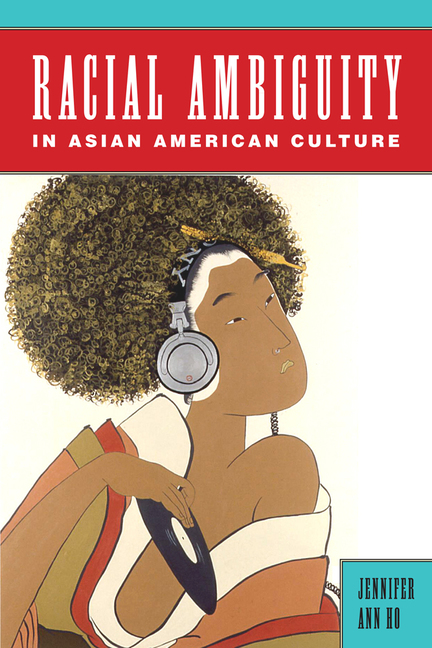Racial Ambiguity in Asian American CulturePosted in Asian Diaspora, Books, Communications/Media Studies, Literary/Artistic Criticism, Media Archive, Monographs, United States on 2015-12-22 04:18Z by Steven |
Racial Ambiguity in Asian American Culture
Rutgers University Press
2015-05-12
256 pages
6 x 9
Cloth ISBN: 978-0-8135-7070-9
Paper ISBN: 978-0-8135-7069-3
Web PDF ISBN: 978-0-8135-7071-6
epub ISBN: 978-0-8135-7537-7
Jennifer Ann Ho, Associate Professor of English and Comparative Literature
University of North Carolina, Chapel Hill
The sheer diversity of the Asian American populace makes them an ambiguous racial category. Indeed, the 2010 U.S. Census lists twenty-four Asian-ethnic groups, lumping together under one heading people with dramatically different historical backgrounds and cultures. In Racial Ambiguity in Asian American Culture, Jennifer Ann Ho shines a light on the hybrid and indeterminate aspects of race, revealing ambiguity to be paramount to a more nuanced understanding both of race and of what it means to be Asian American.
Exploring a variety of subjects and cultural artifacts, Ho reveals how Asian American subjects evince a deep racial ambiguity that unmoors the concept of race from any fixed or finite understanding. For example, the book examines the racial ambiguity of Japanese American Nisei Yoshiko Nakamura deLeon, who during World War II underwent an abrupt transition from being an enemy alien to an assimilating American, via the Mixed Marriage Policy of 1942. It looks at the blogs of Korean, Taiwanese, and Vietnamese Americans who were adopted as children by white American families and have conflicted feelings about their “honorary white” status. And it discusses Tiger Woods, the most famous mixed-race Asian American, whose description of himself as “Cablinasian”—reflecting his background as Black, Asian, Caucasian, and Native American—perfectly captures the ambiguity of racial classifications.
Race is an abstraction that we treat as concrete, a construct that reflects only our desires, fears, and anxieties. Jennifer Ho demonstrates in Racial Ambiguity in Asian American Culture that seeing race as ambiguous puts us one step closer to a potential antidote to racism.
Table Of Contents
- Acknowledgments
- Introduction: Ambiguous Americans: Race and the State of Asian America
- 1. From Enemy Alien to Assimilating American: Yoshiko deLeon and the Mixed-Marriage Policy of the Japanese American Incarceration
- 2. Anti-Sentimental Loss: Stories of Transracial/Transnational Asian American Adult Adoptees in the Blogosphere
- 3. Cablinasian Dreams, Amerasian Realities: Transcending Race in the Twenty-first Century and Other Myths Broken by Tiger Woods
- 4. Ambiguous Movements and Mobile Subjectivity: Passing in between Autobiography and Fiction with Paisley Rekdal and Ruth Ozeki
- 5. Transgressive Texts and Ambiguous Authors: Racial Ambiguity in Asian American Literature
- Coda: Ending with Origins: My Own Racial Ambiguity
- Notes
- Bibliography
- Index



